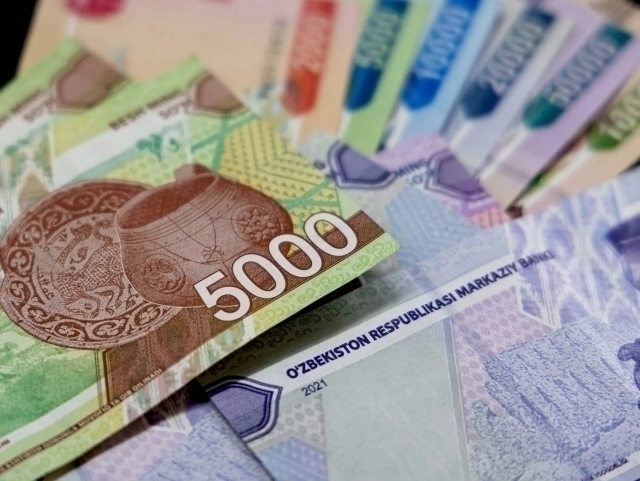Draft of State budget for 2025 was announced
Local
−
29 October 2024 12074 4 minutes
The Ministry of Economy and Finance has announced the development of the draft law “On the State Budget of the Republic of Uzbekistan for 2025” along with the 2025-2027 Budget guidelines. This draft was prepared in accordance with Article 29 of the Budget Code of the Republic of Uzbekistan. The primary elements of this draft law include:
- Projections for the consolidated budget of the Republic of Uzbekistan for 2025, covering the State budget, targeted state funds, extra-budgetary resources of budget organizations, and the Recovery and Development Fund of Uzbekistan. Additionally, it outlines goals and financial projections for the years 2026-2027.
- Forecasts of critical macroeconomic indicators that are expected to influence the budget.
- Limits on the allocation of funds from the national budget for primary budget allocators.
- Local budget revenue and expenditure estimates for the Republic of Karakalpakstan, the regions, and Tashkent city.
- Regulatory transfers from the national budget to local budgets to ensure equitable distribution of resources.
- Caps on public debt and public-private partnership projects, along with the consolidated budget deficit target.
The draft law, comprising 17 articles and 10 annexes, presents a framework for fiscal policy in the coming years, specifically targeting a 6% GDP growth for 2025. This economic growth is anticipated through increases in industrial output by 6.1%, agricultural production by 4.1%, and market services by 14.5%, driven by structural reforms across these sectors.
The government has set out a series of goals and strategies for the tax-budget policy in the medium term. These objectives include:
1. Keeping the consolidated budget deficit within 3% of GDP from 2025 to 2027 to maintain financial stability.
2. Maintaining current tax rates without increasing them, thus providing fiscal predictability and stability for taxpayers.
3. Expanding the budget revenue base by reassessing and gradually eliminating certain tax and customs benefits based on their efficiency and outcomes.
4. Aligning tax and budget policies with World Trade Organization (WTO) standards to promote international trade and compliance with global fiscal practices.
5. Restricting public debt to below 60% of GDP as a safe macroeconomic threshold, while aiming to keep it below 50% of GDP in the medium term to ensure sustainable debt levels.
6. Fully implementing a “Result-oriented budget” approach to enhance accountability and performance in public expenditure.
7. Raising salaries and pensions at a rate at least matching inflation to protect purchasing power.
8. Increasing transparency in budget planning and execution by fostering citizen engagement in budgetary processes.
9. Improving internal controls and audits across public sector organizations to strengthen accountability and financial integrity.
10. Incorporating national sustainable development objectives into budgetary planning and evaluation processes.
11. Phasing in “Green Budgeting” principles to prioritize environmental protection and climate resilience, promoting measures to reduce water use and encourage conservation.
12. Revisiting the structure of budget expenditures in collaboration with international experts, ensuring efficient use of resources.
Based on these objectives and strategies, the State budget revenue for 2025 is projected at 308.5 trillion sums, while total State budget expenditures are expected to reach 344.6 trillion sums. Additionally, the income of state trust funds (excluding interbudgetary transfers) is projected to be 66.5 trillion sums, with planned expenditures amounting to 117.2 trillion sums. Within this, 54.4 trillion sums in transfers from the national budget have been earmarked for state funds.
A specific allocation of 18.5 trillion sums from the State budget will be directed towards the Pension Fund, which also anticipates additional income from extra-budgetary sources amounting to 58.9 trillion sums and total expenses of 74.9 trillion sums.
In line with these projections, the maximum allowed deficit of the consolidated budget for 2025 is set at 3% of GDP, equating to approximately 3 trillion sums, including the funding of national programs through the State budget, state-targeted funds, the Recovery and Development Fund, and external debt commitments.
The combined budget deficit for the State budget and state-targeted funds, totaling 32.4 trillion sums (or 2% of the projected GDP), will be financed through a mix of state internal and external borrowing, revenue from the privatization of state assets, and other fiscal sources. This carefully structured budget framework aims to support Uzbekistan's growth while maintaining fiscal discipline and addressing long-term sustainability goals.
For 2025, the upper limit for the consolidated budget deficit has been established at 3 percent. Consequently, the annual cap on new foreign debt agreements will be set at 5.5 billion US dollars. Of this amount, 3 billion US dollars will be allocated to support the State budget, while 2 billion US dollars will be designated for financing investment projects, totaling an estimated 5 billion US dollars.
To further diversify the state debt portfolio and mitigate currency risks, the government plans to set a cap on the net volume of state securities issued in Uzbekistan’s name. For 2025, this limit will be 30 trillion sums. This strategy aims to balance funding needs with sustainable debt management practices, ensuring a measured approach to both foreign and domestic debt obligations.
Live
All




